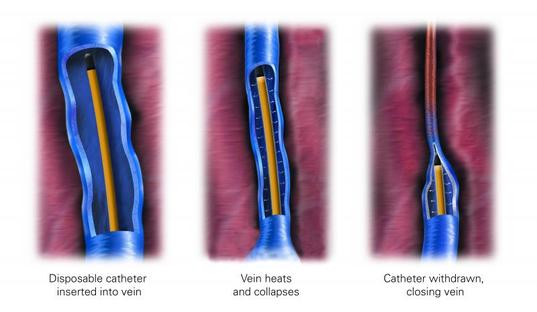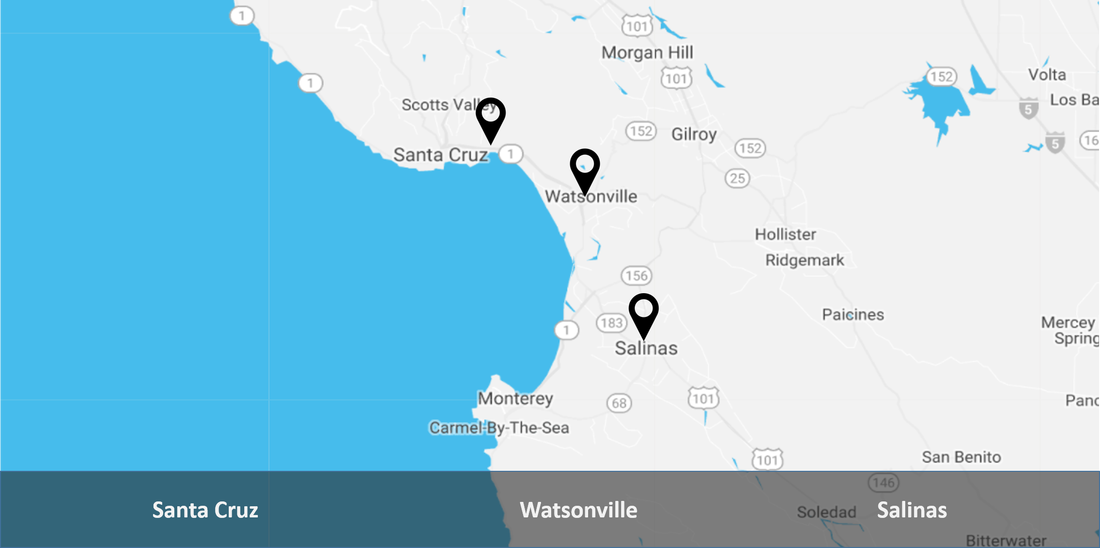Treatments
We offer a range of traditional and state-of-the-art treatment modalities depending on the treatment plan designed specifically for you by our board-certified physicians. All treatments are done in the comfort of an out-patient setting and patients find themselves resuming normal daily activities within a few days. The first step is an ultrasound examination, which will give us a real time and detailed view of your varicose vein system. Since each patient is unique, the results of this ultrasound will help us determine the optimal treatment plan to eliminate abnormal veins. Treatment options include:
Venaseal Closure System: The VenaSeal™ closure system is the only non-tumescent, non-thermal, non-sclerosant procedure that uses a proprietary medical adhesive delivered endovenously to close the vein. This unique approach eliminates the risk of nerve injury when treating the small saphenous vein, which is a risk sometimes associated with certain thermal-based procedures. Clinical studies have demonstrated that the procedure is safe and effective. The procedure is administered without the use of tumescent anesthesia, avoiding patient discomfort associated with multiple needle sticks. More information about the procedure can be found here.
Venaseal Closure System: The VenaSeal™ closure system is the only non-tumescent, non-thermal, non-sclerosant procedure that uses a proprietary medical adhesive delivered endovenously to close the vein. This unique approach eliminates the risk of nerve injury when treating the small saphenous vein, which is a risk sometimes associated with certain thermal-based procedures. Clinical studies have demonstrated that the procedure is safe and effective. The procedure is administered without the use of tumescent anesthesia, avoiding patient discomfort associated with multiple needle sticks. More information about the procedure can be found here.
Radiofrequency Ablation (RFA): We offer the Venefit™ procedure, formerly known as the VNUS Closure™ procedure, for the treatment of varicose veins and CVI. The Venefit™ procedure is a minimally invasive segmental ablation treatment that utilizes radiofrequency (RF) energy to provide an even and uniform heat to contract the collagen in the vein walls, causing them to collapse and seal. Once the diseased vein is closed, blood will re-route itself to other healthy veins.
The procedure allows for a quick, comfortable recovery and a return to everyday activities for the average patient, while also improving the appearance of varicose veins. The procedure has been proven in clinical studies to have excellent long term effectiveness, with less pain and bruising than endovenous laser*. More information about the procedure can be found here.
The procedure allows for a quick, comfortable recovery and a return to everyday activities for the average patient, while also improving the appearance of varicose veins. The procedure has been proven in clinical studies to have excellent long term effectiveness, with less pain and bruising than endovenous laser*. More information about the procedure can be found here.
Ambulatory Phlebectomy: This procedure is used for the removal of varicose veins through multiple stab incisions, small punctures performed on an ambulatory, outpatient basis in the office utilizing local anesthesia. The incisions are typically 5mm each and the procedure is followed by compression stocking garment and immediate ambulation.
Sclerotherapy: This form of treatment involves using a micro needle to inject a special kind of fluid, called a sclerosant, into the vein. This fluid causes the vein walls to become non-functional and to gradually fade away. Sclerotherapy has been available since the 1930's.
Compression Stockings: Compression stockings and/or leg elevation are examples of conservative approaches to treatment of venous disease. Support hose are available over-the-counter but compression stockings are generally of higher compression and are available by prescription only.
*A comparison of the patient experience between those treated with the Venefit ™ procedure, using the Covidien ClosureFast™ Endovenous Radiofrequency Ablation (RFA) Catheter, and those treated with 980nm laser ablation.
Sclerotherapy: This form of treatment involves using a micro needle to inject a special kind of fluid, called a sclerosant, into the vein. This fluid causes the vein walls to become non-functional and to gradually fade away. Sclerotherapy has been available since the 1930's.
Compression Stockings: Compression stockings and/or leg elevation are examples of conservative approaches to treatment of venous disease. Support hose are available over-the-counter but compression stockings are generally of higher compression and are available by prescription only.
*A comparison of the patient experience between those treated with the Venefit ™ procedure, using the Covidien ClosureFast™ Endovenous Radiofrequency Ablation (RFA) Catheter, and those treated with 980nm laser ablation.




